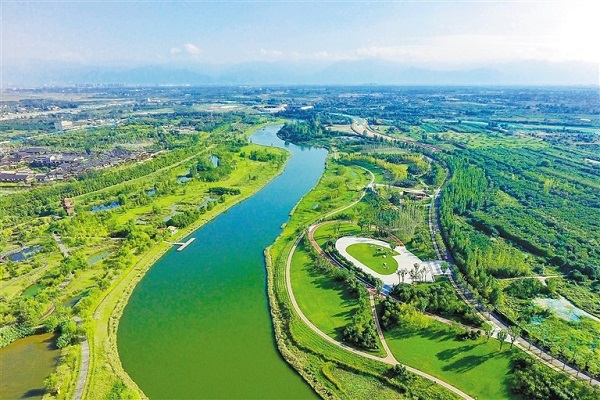Xi'an, capital of Northwest China's Shaanxi province, recently released its land and space ecological restoration plan (2021-35).
Grounded in the ecological challenges faced by mega-cities and the strategic positioning of national central cities, the plan takes addressing "ecological illnesses" as its starting point, exploring new models for ecological restoration.

The water in Xi'an's Fenghe River is clear, and the banks are green and surrounded by lush foliage. [Photo/Xi'an news network]
The plan focuses on the integrated protection and restoration of mountains, waters, forests, farmlands, lakes, grasslands, and deserts, explicitly defining ecological restoration objectives from the perspectives of ecological quality and restoration governance.
By 2025, the city aims to achieve various targets, including the improvement of 106.28 square kilometers of forest land, maintaining the city's forest coverage rate at no less than 48.03 percent, and reaching a forest volume of 38.57 million cubic meters.
The city will also ensure an 80-percent supervision rate of important river and lake shorelines, the comprehensive treatment of 330 hectares of historical abandoned mines, and a soil conservation rate of 70.51 percent.
By 2035 the plan also envisions increasing the forest volume to 43 million cu m, maintaining a soil conservation rate of no less than 73.82 percent, and a wetland protection rate of no less than 65 percent, as well as securing 5,113.75 sq km of critical wildlife habitats.